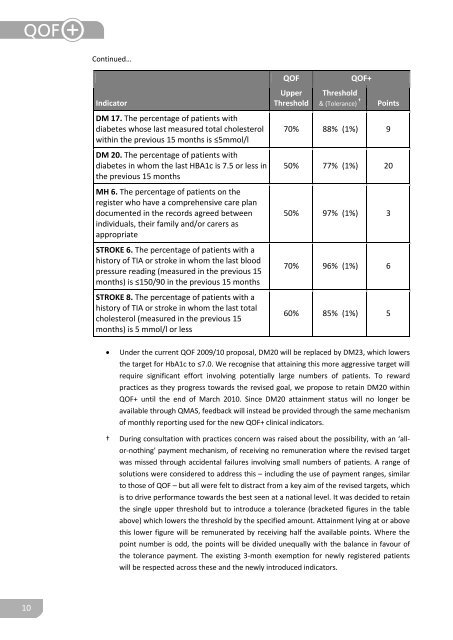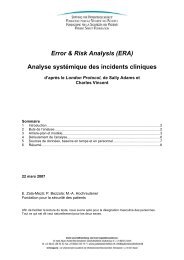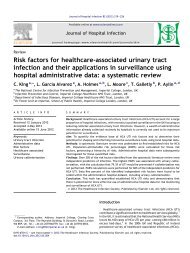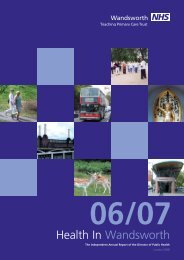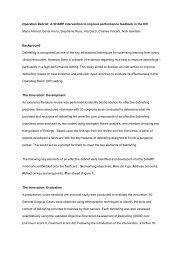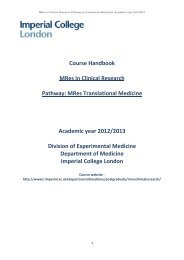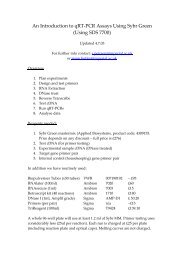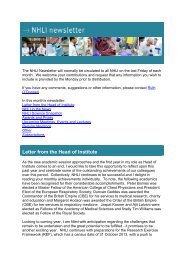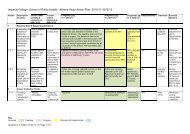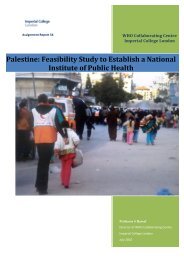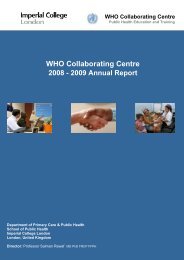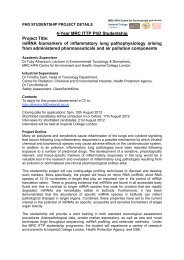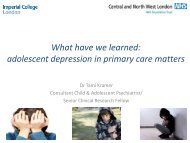QOF Plus Year 1 - Imperial College London
QOF Plus Year 1 - Imperial College London
QOF Plus Year 1 - Imperial College London
Create successful ePaper yourself
Turn your PDF publications into a flip-book with our unique Google optimized e-Paper software.
Continued…<strong>QOF</strong><strong>QOF</strong>+IndicatorUpperThresholdThreshold& (Tolerance) †PointsDM 17. The percentage of patients withdiabetes whose last measured total cholesterolwithin the previous 15 months is ≤5mmol/lDM 20. The percentage of patients withdiabetes in whom the last HBA1c is 7.5 or less inthe previous 15 monthsMH 6. The percentage of patients on theregister who have a comprehensive care plandocumented in the records agreed betweenindividuals, their family and/or carers asappropriateSTROKE 6. The percentage of patients with ahistory of TIA or stroke in whom the last bloodpressure reading (measured in the previous 15months) is ≤150/90 in the previous 15 monthsSTROKE 8. The percentage of patients with ahistory of TIA or stroke in whom the last totalcholesterol (measured in the previous 15months) is 5 mmol/l or less70% 88% (1%) 950% 77% (1%) 2050% 97% (1%) 370% 96% (1%) 660% 85% (1%) 5Under the current <strong>QOF</strong> 2009/10 proposal, DM20 will be replaced by DM23, which lowersthe target for HbA1c to ≤7.0. We recognise that attaining this more aggressive target willrequire significant effort involving potentially large numbers of patients. To rewardpractices as they progress towards the revised goal, we propose to retain DM20 within<strong>QOF</strong>+ until the end of March 2010. Since DM20 attainment status will no longer beavailable through QMAS, feedback will instead be provided through the same mechanismof monthly reporting used for the new <strong>QOF</strong>+ clinical indicators.† During consultation with practices concern was raised about the possibility, with an ‘allor-nothing’payment mechanism, of receiving no remuneration where the revised targetwas missed through accidental failures involving small numbers of patients. A range ofsolutions were considered to address this – including the use of payment ranges, similarto those of <strong>QOF</strong> – but all were felt to distract from a key aim of the revised targets, whichis to drive performance towards the best seen at a national level. It was decided to retainthe single upper threshold but to introduce a tolerance (bracketed figures in the tableabove) which lowers the threshold by the specified amount. Attainment lying at or abovethis lower figure will be remunerated by receiving half the available points. Where thepoint number is odd, the points will be divided unequally with the balance in favour ofthe tolerance payment. The existing 3-month exemption for newly registered patientswill be respected across these and the newly introduced indicators.10


